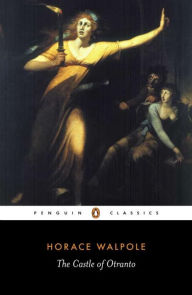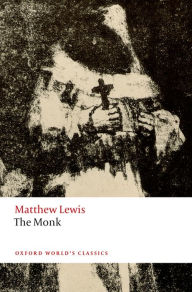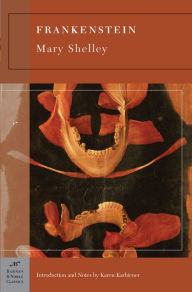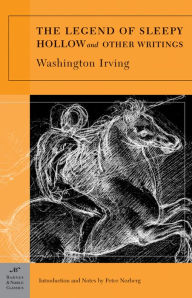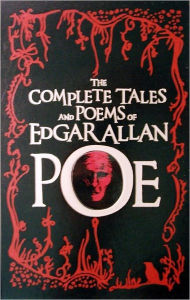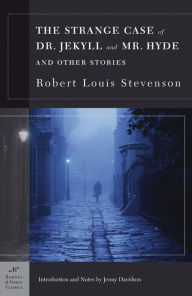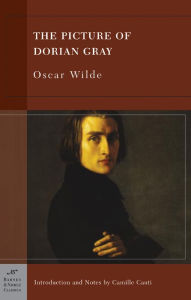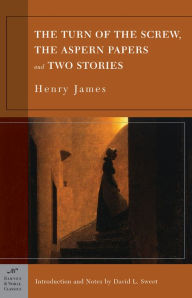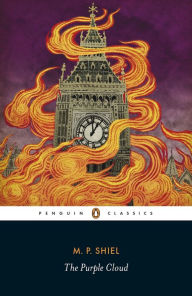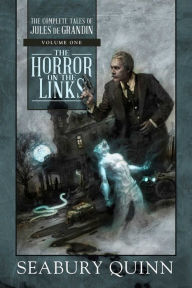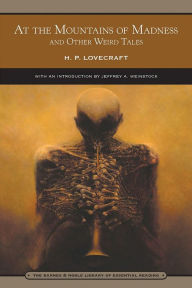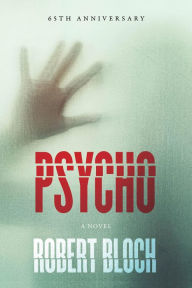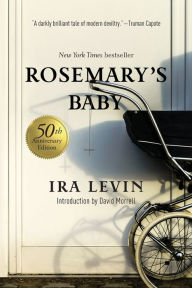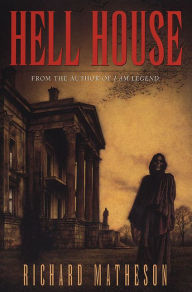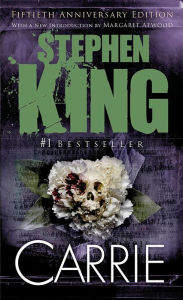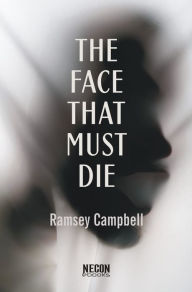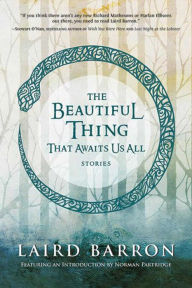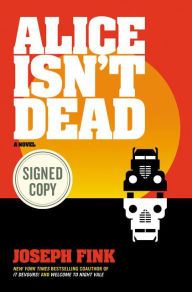21 Books That Offer a Crash-Course in Horror
Horror is an institution; scaring ourselves has become an accepted form of entertainment, so refined that the sub-genres have sub-genres. If you’ve never been much of a horror fan but want to get into the spirit of the season by taking a deep dive into the genre, you can either randomly select a few titles and roll the bones, or you could concentrate on the 20 books listed here, which, taken together, will walk you through a crash course of the literary horror world—note, this isn’t comprehensive or even close to complete, but will give you an idea of how the genre’s evolved.
A Little History
Some folks will argue horror existed as far back as Homer and other ancient writers, and even pops up in the bible. This argument seems to rest entirely on the fact that witches and scary things exist in those works, but that’s not really horror; there’s a necessary facet of emotional terror that the work has to at least intend to inspire that is lacking. Thus, we begin with the earliest works that are arguably recognizable as horror as we understand it today.
The Castle of Otranto
The Castle of Otranto
By Horace Walpole , Michael Gamer
In Stock Online
Paperback
$9.99
$11.00
The Castle of Oranto, by Horace Walpole, 1764
Modern readers might not find this to be particularly scary, as the supernatural elements are underplayed compared to modern tastes. But every aspect of Gothic horror stems directly from this book, from the curse on the noble family to the twisted plot filled with unsavory implications to the secret passages and creepy evidence of ghosts throughout. It more or less established the seeds of the horror genre all by itself.
The Castle of Oranto, by Horace Walpole, 1764
Modern readers might not find this to be particularly scary, as the supernatural elements are underplayed compared to modern tastes. But every aspect of Gothic horror stems directly from this book, from the curse on the noble family to the twisted plot filled with unsavory implications to the secret passages and creepy evidence of ghosts throughout. It more or less established the seeds of the horror genre all by itself.
The Monk
The Monk
By
Matthew Lewis
Editor
Nick Groom
In Stock Online
Paperback $9.95
The Monk, by Matthew Lewis, 1797
Filled with lust, violence, ghosts, and truly terrifying supernatural happenings, The Monk is another Gothic story that brought much of the terror found in earlier examples to the forefront. Although ultimately a morality tale in which the wicked are punished, part of the horror is that the sins they’re punished for are sins most people are guilty of at one time or another, and there is no hint of any kind of salvation.
The Monk, by Matthew Lewis, 1797
Filled with lust, violence, ghosts, and truly terrifying supernatural happenings, The Monk is another Gothic story that brought much of the terror found in earlier examples to the forefront. Although ultimately a morality tale in which the wicked are punished, part of the horror is that the sins they’re punished for are sins most people are guilty of at one time or another, and there is no hint of any kind of salvation.
Frankenstein (Barnes & Noble Classics Series)
Frankenstein (Barnes & Noble Classics Series)
By
Mary Shelley
Introduction
Karen Karbiener
Paperback $7.95
Frankenstein, by Mary Shelley, 1818
Perhaps the most famous horror novel of all time, Shelley’s work of genius is one of the first to eschew supernatural elements entirely for science fiction tropes. It’s also become so iconic within and without the horror world that even people who haven’t read the book think they know the plot. The novel draws its energy from the fundamentals of human nature itself—the quest for knowledge, the dawning terror of realizing you’ve set something in motion you can’t control, and the horror of being rejected entirely by society. That last bit is important, because although Frankenstein’s monster is, you know, a monster, it’s not really the villain of the story.
Frankenstein, by Mary Shelley, 1818
Perhaps the most famous horror novel of all time, Shelley’s work of genius is one of the first to eschew supernatural elements entirely for science fiction tropes. It’s also become so iconic within and without the horror world that even people who haven’t read the book think they know the plot. The novel draws its energy from the fundamentals of human nature itself—the quest for knowledge, the dawning terror of realizing you’ve set something in motion you can’t control, and the horror of being rejected entirely by society. That last bit is important, because although Frankenstein’s monster is, you know, a monster, it’s not really the villain of the story.
The Legend of Sleepy Hollow and Other Writings (Barnes & Noble Classics Series)
The Legend of Sleepy Hollow and Other Writings (Barnes & Noble Classics Series)
By
Washington Irving
Introduction
Peter Norberg
In Stock Online
Paperback $12.95
The Legend of Sleepy Hollow, by
As it’s wont to do, America took the developing tropes of horror fiction and ran with them, transforming the genre into the visceral form we’re used to today. This process took a very long time, but it began in the early 19th century with works like this one—familiar to everyone, yet genuinely terrifying, if you think about it. While your enjoyment of the story is richer if you know a bit about the time period, the central image of the Headless Horseman is still 100 Percent Do Not Want in the modern age, and the structure set out some of the basic outlines that horror still follows today.
The Legend of Sleepy Hollow, by
As it’s wont to do, America took the developing tropes of horror fiction and ran with them, transforming the genre into the visceral form we’re used to today. This process took a very long time, but it began in the early 19th century with works like this one—familiar to everyone, yet genuinely terrifying, if you think about it. While your enjoyment of the story is richer if you know a bit about the time period, the central image of the Headless Horseman is still 100 Percent Do Not Want in the modern age, and the structure set out some of the basic outlines that horror still follows today.
The Complete Tales and Poems of Edgar Allan Poe (Remastered Collection)
The Complete Tales and Poems of Edgar Allan Poe (Remastered Collection)
In Stock Online
eBook $2.99
The Fall o f the House of Usher, et al,, by Edgar Allen Poe, 1839
Just about everything Poe wrote, from detective fiction to love poems, was terrifying, and many of his stories remain iconic works of horror, from the insane point-of-view work in The Tell-Tale Heart to the slow-burn horror of The Cask of Amontillado. The Fall of the House of Usher is representative of the smothering doom Poe infused into his work, built on a concept that seems modern even today—that of the house or structure that’s not merely haunted but can actually hurt you. Poe was one of the first horror writers to plant the idea that inanimate objects might want to hurt us.
Pre-Modern
Horror began to evolve into a distinct genre of fiction, with its own tropes and conventions, in the late 19th century, but by modern standards, the level of output was pretty thin. Still, some of the most famous works of horror ever were published in this period—foundational texts that served to define what, exactly, a horror story was supposed to be.
The Fall o f the House of Usher, et al,, by Edgar Allen Poe, 1839
Just about everything Poe wrote, from detective fiction to love poems, was terrifying, and many of his stories remain iconic works of horror, from the insane point-of-view work in The Tell-Tale Heart to the slow-burn horror of The Cask of Amontillado. The Fall of the House of Usher is representative of the smothering doom Poe infused into his work, built on a concept that seems modern even today—that of the house or structure that’s not merely haunted but can actually hurt you. Poe was one of the first horror writers to plant the idea that inanimate objects might want to hurt us.
Pre-Modern
Horror began to evolve into a distinct genre of fiction, with its own tropes and conventions, in the late 19th century, but by modern standards, the level of output was pretty thin. Still, some of the most famous works of horror ever were published in this period—foundational texts that served to define what, exactly, a horror story was supposed to be.
The Strange Case of Dr. Jekyll and Mr. Hyde and Other Stories (Barnes & Noble Classics Series)
The Strange Case of Dr. Jekyll and Mr. Hyde and Other Stories (Barnes & Noble Classics Series)
By
Robert Louis Stevenson
Introduction
Jenny Davidson
Paperback $7.95
The Strange Case of Jekyll and Hyde, by Robert Louis Stevenson, 1886
Another tale so familiar that it’s almost a given, meaning it’s easy to forget just how disturbing the story really is—or how primal. The idea of being able to give in to your worst impulses without anyone knowing is intriguing in many circumstances, and the danger of losing control of your inner demons is at the heart of many horror stories—but none as iconic as this one. Stevenson’s tale of science gone wrong began to move horror away from formless evils and external forces and towards the intimate and the personal.
The Strange Case of Jekyll and Hyde, by Robert Louis Stevenson, 1886
Another tale so familiar that it’s almost a given, meaning it’s easy to forget just how disturbing the story really is—or how primal. The idea of being able to give in to your worst impulses without anyone knowing is intriguing in many circumstances, and the danger of losing control of your inner demons is at the heart of many horror stories—but none as iconic as this one. Stevenson’s tale of science gone wrong began to move horror away from formless evils and external forces and towards the intimate and the personal.
The Picture of Dorian Gray (Barnes & Noble Classics Series)
The Picture of Dorian Gray (Barnes & Noble Classics Series)
By
Oscar Wilde
Introduction
Camille Cauti
Paperback $7.95
The Picture of Dorian Gray, by Oscar Wilde, 1890
It doesn’t get much more intimate and personal than this, a story in which a man offloads his sins onto a supernatural portrait, allowing him to remain young and handsome while his portrait becomes increasingly gruesome, reflecting his true self. Wilde’s brilliant twist, which finds Gray’s attempts to reverse the desecration of the painting, resulting in even worse consequences—because his motives were selfish, poisoning his attempt at reform—ensured this one would remain influential long after its publication.
The Picture of Dorian Gray, by Oscar Wilde, 1890
It doesn’t get much more intimate and personal than this, a story in which a man offloads his sins onto a supernatural portrait, allowing him to remain young and handsome while his portrait becomes increasingly gruesome, reflecting his true self. Wilde’s brilliant twist, which finds Gray’s attempts to reverse the desecration of the painting, resulting in even worse consequences—because his motives were selfish, poisoning his attempt at reform—ensured this one would remain influential long after its publication.
Dracula (Barnes & Noble Collectible Editions)
Dracula (Barnes & Noble Collectible Editions)
By Bram Stoker
In Stock Online
Paperback $15.00
Dracula, by Bram Stoker, 1897
Another iconic story centered on human frailty—the irresistible lure of decadent pleasures. Stoker was once described as simultaneously “a prude and a pornographer,” seeking to explore the dangerous lust of woman in the Victorian Age while still seeing them punished for it. His story of a monster and the men who come together to oppose its desires ushered in a new age of horror, although it wasn’t really appreciated until it became a smash hit as a Broadway play—and until Stoker’s estate sued the filmmakers responsible for Nosferatu, a pretty blatant example of infringement.
Dracula, by Bram Stoker, 1897
Another iconic story centered on human frailty—the irresistible lure of decadent pleasures. Stoker was once described as simultaneously “a prude and a pornographer,” seeking to explore the dangerous lust of woman in the Victorian Age while still seeing them punished for it. His story of a monster and the men who come together to oppose its desires ushered in a new age of horror, although it wasn’t really appreciated until it became a smash hit as a Broadway play—and until Stoker’s estate sued the filmmakers responsible for Nosferatu, a pretty blatant example of infringement.
The Turn of the Screw, The Aspern Papers and Two Stories (Barnes & Noble Classics Series)
The Turn of the Screw, The Aspern Papers and Two Stories (Barnes & Noble Classics Series)
By
Henry James
Introduction
David L. Sweet
In Stock Online
Paperback $8.95
The Turn of the Screw, by Henry James
James’ methodical story of psychological horror was one of the earliest to tease the reader with unreliable narrators, leaving it up to you to decide whether there really were any ghosts at all. That this foreknowledge doesn’t change the impact of the story is a tribute to James’ skill. Its influence can be seen today in just about any book that involves a creepy old house and a serious air psychological tension that seems to continue to tighten even after the story’s over.
20th Century
Often pinned to the horrors of modern war, especially World War I, and the rise of pulp fiction, horror really came into its own as a distinct genre of fiction in the early 20th century, and went through several waves and reinventions over the course of subsequent decades.
The Turn of the Screw, by Henry James
James’ methodical story of psychological horror was one of the earliest to tease the reader with unreliable narrators, leaving it up to you to decide whether there really were any ghosts at all. That this foreknowledge doesn’t change the impact of the story is a tribute to James’ skill. Its influence can be seen today in just about any book that involves a creepy old house and a serious air psychological tension that seems to continue to tighten even after the story’s over.
20th Century
Often pinned to the horrors of modern war, especially World War I, and the rise of pulp fiction, horror really came into its own as a distinct genre of fiction in the early 20th century, and went through several waves and reinventions over the course of subsequent decades.
The Purple Cloud
The Purple Cloud
By
M. P. Shiel
Introduction
John Sutherland
Noted by
John Sutherland
In Stock Online
Paperback $18.00
The Purple Cloud, by M.P. Shiel, 1901
This apocalyptic story about a man who goes on an expedition to the North Pole and witnesses the destruction of mankind by a mysterious, poisonous purple cloud, holds nothing back, diving pretty deep into the weird—especially for a book published in 1901. It’s influence on future horror writers outstrips its actual entertainment value—things get a little hard to take in the later pages—but if you want to see where H.P. Lovecraft got his inspiration, you have to read Shiel.
The Purple Cloud, by M.P. Shiel, 1901
This apocalyptic story about a man who goes on an expedition to the North Pole and witnesses the destruction of mankind by a mysterious, poisonous purple cloud, holds nothing back, diving pretty deep into the weird—especially for a book published in 1901. It’s influence on future horror writers outstrips its actual entertainment value—things get a little hard to take in the later pages—but if you want to see where H.P. Lovecraft got his inspiration, you have to read Shiel.
The Horror on the Links: The Complete Tales of Jules de Grandin, Volume One
The Horror on the Links: The Complete Tales of Jules de Grandin, Volume One
Hardcover $34.99
The Jules de Grandin Stories, by Seabury Quinn, 1925
The rise of pulp magazines in the 20th century meant there was a sudden demand for stories in the speculative genres—lots of them, in a steady supply. Characters like Jules de Grandin, a sort of Sherlock Holmes-meets-Scooby Doo character who investigated crimes involving ghosts, monsters, and magic—most of which turned out to center on regular, if depraved, people—served to make horror tropes familiar and acceptable to a mass audience. While these stories are great fun, they’re not particularly scary to the modern reader—but they served to create a hunger for the more intense material coming down the pike.
The Jules de Grandin Stories, by Seabury Quinn, 1925
The rise of pulp magazines in the 20th century meant there was a sudden demand for stories in the speculative genres—lots of them, in a steady supply. Characters like Jules de Grandin, a sort of Sherlock Holmes-meets-Scooby Doo character who investigated crimes involving ghosts, monsters, and magic—most of which turned out to center on regular, if depraved, people—served to make horror tropes familiar and acceptable to a mass audience. While these stories are great fun, they’re not particularly scary to the modern reader—but they served to create a hunger for the more intense material coming down the pike.
At the Mountains of Madness and Other Weird Tales (Barnes & Noble Library of Essential Reading)
At the Mountains of Madness and Other Weird Tales (Barnes & Noble Library of Essential Reading)
By
H. P. Lovecraft
Introduction
Jeffrey Andrew Weinstock
Paperback $11.95
At the Mountains of Madness, by H.P. Lovecraft, 1936
Lovecraft’s real life and racist beliefs aside, he occupies a fascinating place in horror, in that his ideas are widely enjoyed by people who have likely never read his work. Lovecraft’s actual writing is hit-or-miss, often veering into outright muddled—but when he focused, as he did in his famous novel At the Mountains of Madness, he was terrifying. By establishing the Cthulu Mythos, Lovecraft created a mythic foundation for horror that still being mined today.
At the Mountains of Madness, by H.P. Lovecraft, 1936
Lovecraft’s real life and racist beliefs aside, he occupies a fascinating place in horror, in that his ideas are widely enjoyed by people who have likely never read his work. Lovecraft’s actual writing is hit-or-miss, often veering into outright muddled—but when he focused, as he did in his famous novel At the Mountains of Madness, he was terrifying. By establishing the Cthulu Mythos, Lovecraft created a mythic foundation for horror that still being mined today.
Psycho: A Novel
Psycho: A Novel
By Robert Bloch
In Stock Online
Paperback $15.00
Psycho, by Robert Bloch, 1959
It might seem hard to believe, but Psycho was transformative to the horror genre, in that there are zero supernatural elements in it. The horror is drawn entirely from one man’s break from reality—the character was even based on real-life serial killers. This is the book that boiled horror down to its essential motives—to scare and disturb—and made people realize that you didn’t need creaky old mansions or fictional monsters to scare the yips out of yourself.
Psycho, by Robert Bloch, 1959
It might seem hard to believe, but Psycho was transformative to the horror genre, in that there are zero supernatural elements in it. The horror is drawn entirely from one man’s break from reality—the character was even based on real-life serial killers. This is the book that boiled horror down to its essential motives—to scare and disturb—and made people realize that you didn’t need creaky old mansions or fictional monsters to scare the yips out of yourself.
Rosemary's Baby
Rosemary's Baby
By Ira Levin
Paperback $15.95
Rosemary’s Baby, by Ira Levin, 1967
As the 20th century moved on, horror became more realistic and increasingly based in modern times, finding terror in society itself. Levin intended this story to be a critique of religion and belief systems in general, but its true horror lies in the fact that Rosemary is victimized by her neighbors and even, to an extent, her husband—society itself has lied to her, gaslighted her, and assaulted her. If you can’t trust your neighbors,who can you trust?
Rosemary’s Baby, by Ira Levin, 1967
As the 20th century moved on, horror became more realistic and increasingly based in modern times, finding terror in society itself. Levin intended this story to be a critique of religion and belief systems in general, but its true horror lies in the fact that Rosemary is victimized by her neighbors and even, to an extent, her husband—society itself has lied to her, gaslighted her, and assaulted her. If you can’t trust your neighbors,who can you trust?
Hell House
Hell House
In Stock Online
Paperback
$15.99
$17.99
Hell House, by Richard Matheson, 1971
Matheson wrote some of the most influential books in the horror genre, including his more famous I Am Legend. Hell House marked a synthesis between the supernatural horror of tradition and the more modern psychological horror. The titular house is a powerful, inexplicable force, but its power is wielded by using people’s secrets and weaknesses against them, establishing a theme that continues to be used today.
Hell House, by Richard Matheson, 1971
Matheson wrote some of the most influential books in the horror genre, including his more famous I Am Legend. Hell House marked a synthesis between the supernatural horror of tradition and the more modern psychological horror. The titular house is a powerful, inexplicable force, but its power is wielded by using people’s secrets and weaknesses against them, establishing a theme that continues to be used today.
Carrie
Carrie
By Stephen King
In Stock Online
Paperback $9.99
Carrie, by Stephen King, 1974
Stephen King is often credited with the creation of horror as a marketing category unto itself, and he certainly single-handed led a surge of interest in horror fiction—and remains the most famous horror writer of all time. While many of the writers that preceded him were excellent, King also brought a sheen of literary quality to the genre, using the tricks and tropes of non-genre writing to craft deeply-imagined characters with individual motivations that lay outside the horrifying events. From the jump, King’s stories blended old-school supernatural elements, sci-fi concepts, and characters with weaknesses, and add a layer of complexity and artistry that elevated the entire genre.
Carrie, by Stephen King, 1974
Stephen King is often credited with the creation of horror as a marketing category unto itself, and he certainly single-handed led a surge of interest in horror fiction—and remains the most famous horror writer of all time. While many of the writers that preceded him were excellent, King also brought a sheen of literary quality to the genre, using the tricks and tropes of non-genre writing to craft deeply-imagined characters with individual motivations that lay outside the horrifying events. From the jump, King’s stories blended old-school supernatural elements, sci-fi concepts, and characters with weaknesses, and add a layer of complexity and artistry that elevated the entire genre.
The Face That Must Die
The Face That Must Die
NOOK Book $2.99
The Face That Must Die, by Ramsey Campbell, 1979
Campbell’s lauded work is both heavily influenced by Lovecraft and essentially weirder. That weirdness has been taken to new levels by subsequent horror writers, eventually spurring the bizarro movement—horror that goes way off the deep end. In Campbell’s work, that weirdness is still subtle and controlled; this book, told through the eyes of a disturbed man, offers a view of reality that gets under your skin and frightens you on a nearly subliminal basis.
The Face That Must Die, by Ramsey Campbell, 1979
Campbell’s lauded work is both heavily influenced by Lovecraft and essentially weirder. That weirdness has been taken to new levels by subsequent horror writers, eventually spurring the bizarro movement—horror that goes way off the deep end. In Campbell’s work, that weirdness is still subtle and controlled; this book, told through the eyes of a disturbed man, offers a view of reality that gets under your skin and frightens you on a nearly subliminal basis.
Exquisite Corpse
Exquisite Corpse
In Stock Online
Paperback $16.99
Exquisite Corpse, by Poppy Z. Brite, 1997
As the 20th century ticked by, horror grew increasingly nihilistic, suffering in some ways from a problem science fiction also faced: reality was catching up. It’s hard to be scared of something in a book when the nightly news has regular reports of atrocities, so horror made its way to the edge, offering gruesome characters and eccentric premises—like Brite’s story of two serial killers who meet cute and decide to team up for what can only be described as an orgy of kink and killing.
Right Now
Horror as a marketing category went through some lean times as the 20th century closed; while it thrived on movie screens, in print, it all but disappeared, as many publishers failed or closed up their imprints and what books were published were absorbed into other genres. But horror didn’t die, it simply evolved; today it thrives in print with a literary facade and on the internet in the form of creepypastas and memes that have moved into more formal stories.
Exquisite Corpse, by Poppy Z. Brite, 1997
As the 20th century ticked by, horror grew increasingly nihilistic, suffering in some ways from a problem science fiction also faced: reality was catching up. It’s hard to be scared of something in a book when the nightly news has regular reports of atrocities, so horror made its way to the edge, offering gruesome characters and eccentric premises—like Brite’s story of two serial killers who meet cute and decide to team up for what can only be described as an orgy of kink and killing.
Right Now
Horror as a marketing category went through some lean times as the 20th century closed; while it thrived on movie screens, in print, it all but disappeared, as many publishers failed or closed up their imprints and what books were published were absorbed into other genres. But horror didn’t die, it simply evolved; today it thrives in print with a literary facade and on the internet in the form of creepypastas and memes that have moved into more formal stories.
Penpal
Penpal
In Stock Online
Paperback $9.99
Penpal, by Dathan Auerbach, 2012
If you’ve never heard the term “creepypasta,” you will soon enough; it’s slowly becoming a legit source for horror stories—the Slender Man film and SyFy’s Channel Zero are just two examples of creepypasta-inspired fare. Creepypastas are essentially horror memes—short stories and images that intend to unsettle and terrify, often linked together by disparate communities to form deep back stories. Auerbach’s Penpal began life as one such creepypasta, and it evolved into a novel that has the neutral, deadened tone of the best examples of the format.
Penpal, by Dathan Auerbach, 2012
If you’ve never heard the term “creepypasta,” you will soon enough; it’s slowly becoming a legit source for horror stories—the Slender Man film and SyFy’s Channel Zero are just two examples of creepypasta-inspired fare. Creepypastas are essentially horror memes—short stories and images that intend to unsettle and terrify, often linked together by disparate communities to form deep back stories. Auerbach’s Penpal began life as one such creepypasta, and it evolved into a novel that has the neutral, deadened tone of the best examples of the format.
The Beautiful Thing That Awaits Us All: Stories
The Beautiful Thing That Awaits Us All: Stories
By
Laird Barron
Introduction
Norman Partridge
In Stock Online
Paperback $15.99
The Beautiful Thing That Awaits Us All, by Laird Barron, 2013
Barron may represent the future of horror; he combines a literary flare with long, complex sentences, and lush descriptive passages with a fusion of genres; his most successful stories mashups of noir, crime, horror, and fantasy. Because why can’t everything be terrifying? Consider the first season of HBO’s True Detective: a crime thriller that was flat-out a horror story for a few episodes before resolving into a crime story again. Who’s to say what’s horror and what’s not?
The Beautiful Thing That Awaits Us All, by Laird Barron, 2013
Barron may represent the future of horror; he combines a literary flare with long, complex sentences, and lush descriptive passages with a fusion of genres; his most successful stories mashups of noir, crime, horror, and fantasy. Because why can’t everything be terrifying? Consider the first season of HBO’s True Detective: a crime thriller that was flat-out a horror story for a few episodes before resolving into a crime story again. Who’s to say what’s horror and what’s not?
Alice Isn't Dead (Signed Book)
Alice Isn't Dead (Signed Book)
By Joseph Fink
Hardcover
$17.99
$19.99
Alice Isn’t Dead, by Joseph Fink, 2018
Alice isn’t dead is based on a successful podcast also written by Fink (one of the co-creators of Welcome to Night Vale). The podcast, about a truck driver’s lonely roadtrip across the US in search of her missing wife, is making its case as the format of the future in general, though it works remarkably well as a standalone novel. Aside from being an example of how cutting-edge horror is being made these days, it’s also a scary piece of work, infusing old-school story elements (unstoppable monsters) with a modern sensibility and sense of cultural malaise.
What horror books do you regard as foundational?
Alice Isn’t Dead, by Joseph Fink, 2018
Alice isn’t dead is based on a successful podcast also written by Fink (one of the co-creators of Welcome to Night Vale). The podcast, about a truck driver’s lonely roadtrip across the US in search of her missing wife, is making its case as the format of the future in general, though it works remarkably well as a standalone novel. Aside from being an example of how cutting-edge horror is being made these days, it’s also a scary piece of work, infusing old-school story elements (unstoppable monsters) with a modern sensibility and sense of cultural malaise.
What horror books do you regard as foundational?
